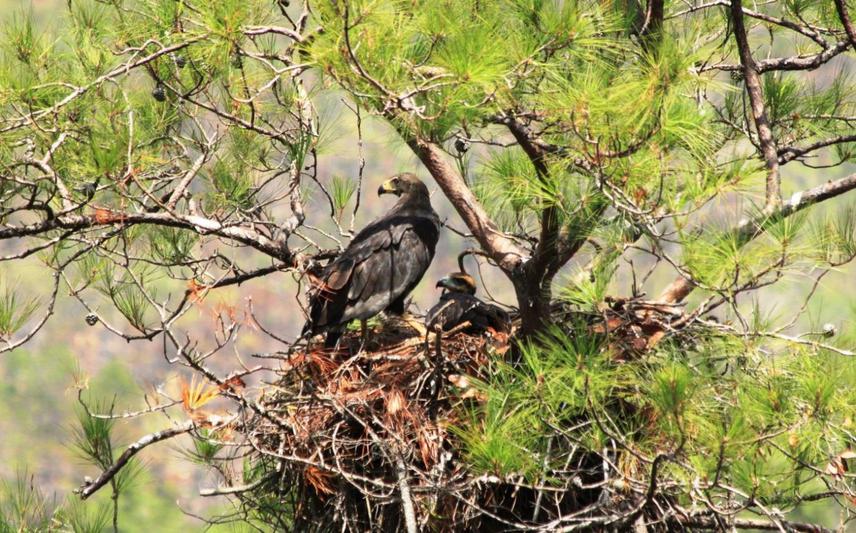Ryan Phillips
The aim of this project is to learn about this enigmatic species through new technologies such as GPS radio-transmitters and GIS, work with local collaborators and communities to develop conservation communities through field research opportunities, trainings and stewardship, heightening biodiversity appreciation and education and provide the management agencies and scientific community with information on the species, so that a Conservation Action Plan can be initiated.

Adult female and nestling on nest when nest was first discovered on 30 June 2011. © R. Martinez
The Solitary Eagle Buteogallus solitarius is a species of conservation concern (IUCN Near Threatened, Critically Endangered in Belize), yet virtually unknown to science. The recent discovery of a Solitary Eagle nest in Belize, the only known active nest throughout its entire range, offers an urgent and unique opportunity to obtain data on its habitat requirements, movements, threats and habitat connectivity.
Belize is undergoing rapid development, and subsequent habitat loss and fragmentation are creating isolated wildlife populations and putting them at greater risk. Founded in 2009, the Belize Raptor Research Institute (BRRI) aims to conserve Neotropical raptors through research, habitat protection, and by providing local communities with the power to directly participate in conservation through education, training, and internship opportunities. BRRI efforts are focused on little known and endangered raptors that are most in need of immediate conservation actions. Currently, all information about the Solitary Eagle is negligible. Prior to the discovery of this Solitary Eagle nest in Belize in 2011, only 4 other nests (2 in Mexico, 1 in Ecuador and 1 in Peru) had ever been documented for this species, none of which were studied. The nest in Belize is currently the only known active nest throughout its entire range – and it sits in the middle of a 3,000 acre tract of land in danger of being sold to developers if a Solitary Eagle Preserve is not created. This situation offers a unique opportunity for research, conservation and community engagement which will directly protect this species and potentially all of the diverse flora and fauna found in the area.
Our aim of this project is to learn about this enigmatic species through new technologies such as GPS radio-transmitters and GIS, work with local collaborators and communities to develop conservation communities through field research opportunities, trainings and stewardship, heightening biodiversity appreciation and education and provide the management agencies and scientific community with information on the species, so that a Conservation Action Plan can be initiated.